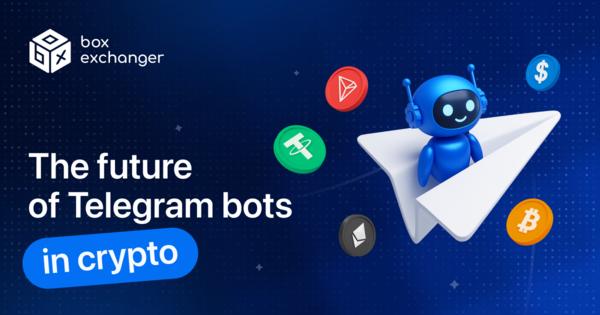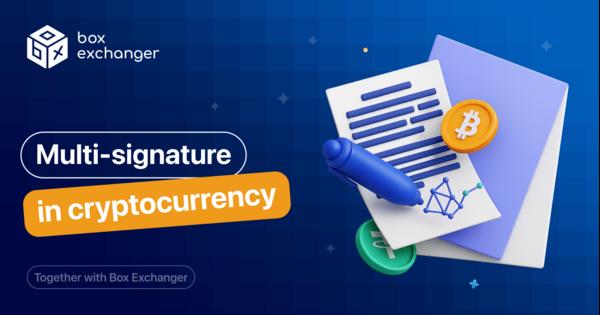7 min.
Blockchain Technology: What it is in simple terms
Added: December 10, 2024
Updated: July 1, 2025

With the growth of the crypto market, many people are asking, what is blockchain? The term "blockchain" appears more and more frequently online. It is associated with innovative methods of data processing that guarantee integrity, transparency, and security of operations.
Blockchain is a secure way of storing and transferring data in the form of a chain of blocks linked to each other by specific keys. Each new key contains information about the previous one.
Important! It is impossible to secretly alter the information in one of the blocks without modifying all subsequent blocks, which makes blockchain technology highly reliable.
Let’s explore what blockchain is in simple terms.
Basics of Blockchain
The essence of blockchain lies in creating a decentralized network consisting of a chain of blocks with information. This technology enables the system to automatically verify the validity of any operation. Below are the main components of blockchain technology:
- Smart Contracts: These contracts manage transactions independently without involving third parties. Essentially, they are programs in the blockchain system that execute automatically when specific conditions are met. They are recorded in the ledger if they meet the terms of the deal.
- Distributed Ledger: This is a shared database within the blockchain network, where copies of transactions are stored. Any user with editor rights can delete a file completely. However, according to the rules of distributed ledgers, there are strict regulations regarding who can edit what.
- Public Key Cryptography: This is a security system that enables the identification of any participant in the blockchain network. The system generates two keys: one is public and shared among all users, while the other is unique. Combining these keys allows unlocking data in the ledger.
How Does Blockchain Work?
The mechanism of blockchain operation can be divided into several steps:
- Creating a New Block: The first step involves creating a new block containing a set of transactions. To form a new block, all recent transactions must be collected.
- Hashing Information: After gathering the transactions, the information in the block is hashed. A hash is a unique string created by a hash function that represents the block's contents.
- Linking to the Previous Block: The newly hashed block is linked to the previous block, creating a chain and ensuring the integrity of the blockchain.
- Proof of Work: In blockchains using the Proof of Work mechanism, computational tasks must be performed to add a new block. This process, known as mining, requires significant computational resources.
- Block Confirmation: After completing the computational work, the new block is confirmed by other network participants, ensuring the block's validity and proper addition to the chain.
- Block Distribution: Once confirmed, the block is distributed across the network to other participants, maintaining the decentralized nature of the blockchain and ensuring reliable information transfer.
Types of blockchain: public, private and consortium
Depending on the purpose and participants, blockchain networks are divided into three types:
- Public blockchain - available to any user. This is the type on which Bitcoin, Ethereum and other cryptocurrencies operate. All transactions in such networks are transparent and verified in a decentralised manner.
- Private blockchain - used in corporate environments where access to data is limited. It allows companies to implement blockchain without having to open information to a wider audience.
- Consortium blockchain - managed by a group of organisations. It is a compromise between privacy and decentralisation, suitable for financial institutions, logistics and insurance.
This approach allows for flexible use of blockchain technology depending on the specifics of the task and industry.
Applications of Blockchain in Cryptocurrency
Blockchain technology is widely used in cryptocurrency, with decentralization as its foundational principle. This means there is no central authority, and all participants in the network can control and verify transactions. Blockchain in crypto ensures security, transparency, and reliability of transactions.
Applications of blockchain beyond cryptocurrencies
While blockchain technology is best known for cryptocurrencies, it is actively used in other areas as well:
- Logistics and supply chains. Blockchain can be used to track the movement of goods, confirm authenticity and delivery dates.
- Healthcare. Patient data stored in secure, decentralised systems is accessible only to authorised professionals.
- Public services and e-voting. The introduction of blockchain into electoral systems allows elections to be conducted transparently and eliminates falsification.
- Copyright and art. NFT and other blockchain-based solutions allow authors to protect their works and receive direct payment.
These applications demonstrate that blockchain has the potential to transform a wide range of industries, improving transparency and trust between participants.
Key Benefits of Blockchain in Cryptocurrency:
- Enhanced Security: All transactions are recorded in blocks, and the blockchain chain is stored and distributed across the entire network, making data manipulation or falsification extremely difficult. Additionally, blockchain protects data confidentiality and resists hacking attempts.
- Transparency and Traceability: Every cryptocurrency transaction is recorded openly and cannot be altered or deleted, fostering trust among participants and preventing fraudulent activities.
- Efficiency in Transactions: Blockchain reduces transaction times and costs by eliminating intermediaries, significantly lowering fees and improving the efficiency of cryptocurrency exchanges.
Thus, blockchain plays a crucial role in the development and functioning of cryptocurrency. Its application ensures secure, transparent, and efficient financial transactions, making cryptocurrency increasingly attractive to investors and users worldwide.
Differences Between Blockchain, Databases, and Cloud Technology
Blockchain, databases, and cloud technology all play significant roles in modern information technology but differ in structure and functionality.
- Blockchain: A decentralized digital technology storing data in "chains of blocks." Each block contains information about transactions performed within the network. Unlike databases, blockchain stores information across all participants, making it more secure and resistant to data tampering or breaches.
- Databases: Centralized storage systems organized into tables with relational connections between entities. Databases are commonly used in companies and organizations to store and manage structured data. Unlike blockchain, databases are managed by one or more administrators.
- Cloud Technology: Enables access to computing resources and data storage via the internet. Cloud services allow companies to scale their infrastructure and costs efficiently. Unlike blockchain or databases, cloud technology offers instant scalability and adaptability to changing user needs.
Each of these technologies provides unique advantages and disadvantages, and understanding their differences can help utilize them effectively.
Advantages and Disadvantages of Blockchain Technology
Blockchain is a powerful tool for secure data storage and transmission, as well as for verifying information authenticity. However, it comes with both advantages and disadvantages.
| Advantages of Blockchain Technology | Disadvantages of Blockchain Technology |
|---|---|
| Transparency: All actions performed within the blockchain are recorded and stored in hashes, allowing easy time-based tracking. This feature is especially useful in logistics and electronic payments. | Energy Consumption: Mining new blocks in large blockchain systems requires significant electricity, affecting profitability and raising environmental concerns. |
| Security: Data on blockchain platforms is stored as copies on all devices connected to the network, making it resistant to attacks and physical damage. Cryptographic protection prevents unauthorized changes or deletions. | Scalability Challenges: Larger blockchain systems require more resources to maintain, causing increased network load and slower transaction processing. |
| Automation: Blockchain platforms typically operate automatically, making transactions fast and convenient for users without requiring additional resources or actions. | Irreversible Data: While immutability is an advantage, it also poses challenges. Errors in blocks cannot be corrected, even by the owner, creating problems when revisions are needed. |
Blockchain Technology Trends 2024-2025
Modern blockchain development is moving towards scalability and increased privacy:
- Web3 and decentralised applications (dApps) are becoming the standard for new digital platforms.
- zk-Rollups and Layer 2 solutions allow offloading the mainstream blockchains, making transactions cheaper and faster.
- CBDCs - blockchain-based central bank digital currencies - are being tested around the world.
- Resilient blockchains powered by Proof of Stake algorithms are replacing energy-intensive networks like Bitcoin.
Together, these trends indicate that blockchain will remain a key technology for the digital future and become even more widespread.
Now you know what blockchain technology is and its core essence. It is a robust tool ensuring secure and transparent operations. However, challenges must be addressed to unlock the full potential of blockchain. As the technology evolves, it is likely to have fewer drawbacks and more promising prospects in the future.
Frequently Asked Questions
What is blockchain in simple terms?
It is a way of storing information as a chain of interconnected blocks where data cannot be tampered with or deleted.
What is the purpose of blockchain?
It is used to ensure transparency and security of transactions in cryptocurrencies, business, logistics and other areas.
How is blockchain different from a regular database?
Blockchain is decentralised, secure and immutable, whereas databases are centralised and controlled by administrators.
Also read

December 26, 2025
The future of Telegram bots in crypto
Users are accustomed to Telegram trading bots speeding up market operations: they provide signals, place orders, co...

December 25, 2025
Multi-signature in cryptocurrency
One of the most practical techniques in crypto asset management is multi-signature in the Bitcoin network: transfer...

December 24, 2025
How to increase conversion on an exchange website
The purpose of this article is to increase conversion on an exchange website through speed, convenience, and trust,...